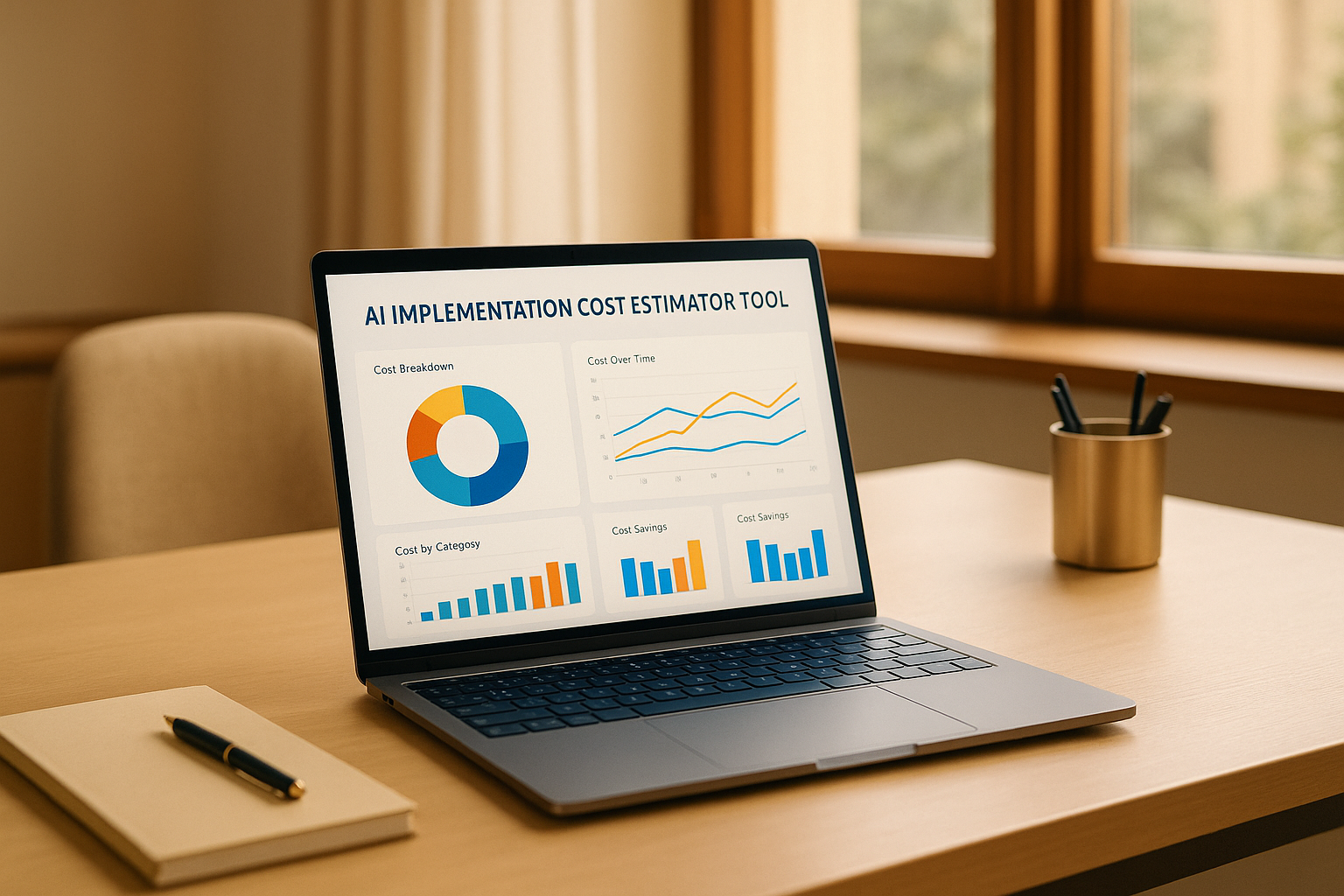
Feature scaling is a key step in preparing your data for machine learning models. It ensures that numerical features are adjusted to comparable ranges, improving model accuracy, training speed, and stability. Without scaling, features with larger ranges can dominate, leading to skewed results and slower convergence for gradient-based algorithms.
| Scaling Method | Output Range | Best For | Handles Outliers | Preserves Distribution |
|---|---|---|---|---|
| Standardization | Unbounded | Normal distributions | Moderate | Yes |
| Min-Max Scaling | 0 to 1 | Bounded data, neural networks | Poor | No |
| Logarithmic Scaling | Varies | Exponential data, wide ranges | Good | No |
| Absolute Maximum | -1 to 1 | Signed data with magnitude | Poor | Partially |
Scaling is unnecessary for tree-based models like decision trees or random forests but is critical for gradient-based and distance-based algorithms. To ensure optimal results, select the right scaling method based on your data and algorithm requirements. Always test and validate your approach to ensure consistency and accuracy.
When working with datasets, choosing the right scaling technique can make a big difference in how well your algorithms perform. Each method has its own strengths, ideal use cases, and limitations, so understanding them is key.
Standardization adjusts features to have a mean of 0 and a standard deviation of 1. The formula is simple: (x - mean) / std. This method is particularly effective for data that follows a normal distribution. It maintains the original shape of the distribution but can still be influenced by outliers. Standardization is especially useful for algorithms like linear regression and logistic regression, which assume normally distributed data. Neural networks also benefit from this method, as it helps gradient descent find optimal solutions more quickly during training.
Min-Max scaling transforms features to fit within a specific range, typically between 0 and 1. The formula is (x - min) / (max - min). This ensures all features contribute equally while preserving relative differences between values. It's particularly useful for non-Gaussian data when the bounds are well-defined. For example, in image processing, where pixel values range from 0 to 255, Min-Max scaling can help neural networks work more efficiently. However, one major downside is its sensitivity to outliers. A single extreme value can distort the scaling, compressing the rest of the data into a narrow range.
Logarithmic scaling applies the natural logarithm to each value, making it ideal for data that spans multiple orders of magnitude, such as population sizes or financial metrics. This method is especially helpful for datasets with exponential growth or decay patterns. However, it doesn’t work with zero or negative values directly, so you'll need to add a small constant to handle those cases.
This method divides each feature by its maximum absolute value, scaling the data to fall within the range of -1 to 1. It’s particularly useful when both positive and negative values carry meaningful information, such as in financial datasets. However, like Min-Max scaling, it’s highly sensitive to outliers. A single extreme value can compress the range of the remaining data, reducing its effectiveness.
| Scaling Method | Output Range | Best For | Handles Outliers | Preserves Distribution |
|---|---|---|---|---|
| Standardization | Unbounded | Normal distributions | Moderate | Yes |
| Min-Max | 0 to 1 | Known bounds, neural networks | Poor | No |
| Logarithmic | Varies | Exponential data, wide value ranges | Good | No |
| Absolute Maximum | -1 to 1 | Data where sign and magnitude matter | Poor | Partially |
The choice of scaling method should align with the nature of your dataset and the specific requirements of your algorithm. Selecting the right approach can significantly improve model performance and speed up convergence.
Machine learning algorithms respond differently to feature scaling, and understanding which ones depend on it can save you time and improve results.
Distance-based algorithms are particularly sensitive to feature scaling because they calculate distances between data points. If feature ranges vary widely, certain features can dominate the calculations, distorting the results.
"Feature Scaling is performed to put your different features that may contain different ranges of values... on a similar scale. This helps machine learning algorithms that make use of distance among data points."
- Ali Rizvi, Data Scientist
Support Vector Machines (SVMs) also depend on scaling. Research from Stanford revealed that scaling improves SVM accuracy by 20%, ensuring balanced distance metrics for better decision boundaries.
Neural networks rely heavily on feature scaling as well. These models use gradient-based optimization, and scaling ensures that all features contribute evenly during training. This consistency leads to faster and more stable convergence.
Linear and logistic regressions also benefit from scaling, especially when regularization techniques like L1 or L2 are applied.
"Scaling features in machine learning is like putting all the variables on the same playing field... By scaling them, each feature gets equal importance, making the model fairer and more accurate."
- Jayanth MK, Data Scientist
Next, let’s look at algorithms that don’t rely on scaling.
Unlike distance-based methods, decision trees and similar models are unaffected by feature scaling. These algorithms make decisions based on thresholds, not distances. For example, a decision tree might split data with rules like, "Is the square footage greater than 2,000?" This process works the same regardless of whether the data is scaled.
Tree-based models like Random Forests and Gradient Boosting, along with rule-based classifiers, operate on logical conditions rather than numerical differences. So, if you're using these models exclusively, feature scaling isn't necessary.
Feature scaling doesn’t just improve accuracy - it can also speed up training. It plays a crucial role in gradient descent optimization. When features are on different scales, their derivatives vary unevenly, leading to inefficient updates that slow down convergence. For neural networks, scaling smooths the loss landscape, allowing optimizers like stochastic gradient descent (SGD) to find the minimum more efficiently.
Getting feature scaling right involves thoughtful timing, addressing anomalies, and setting up consistent practices for production. These steps work hand-in-hand with the scaling methods and algorithm insights discussed earlier.
The timing and approach to feature scaling can heavily influence your model's performance. Always fit scalers to your training data first, then apply them to test data to avoid data leakage.
Experiment with raw, normalized, and standardized data to see what works best. For example, in the Big Mart sales prediction dataset, scaling reduced the RMSE score for KNN models. Normalized data worked slightly better for KNN, while standardized data gave better results for Support Vector Regressor models.
Avoid scaling one-hot encoded features. These binary variables are already on a uniform scale, and further scaling can add unnecessary complexity. If you're using regularization methods like L1 or L2 in your loss function, scaling becomes critical. Algorithms like KNN and those using gradient descent benefit significantly from scaling, while tree-based models tend to be less sensitive to feature scales.
However, scaling isn’t always helpful. If lower-scale variables weren’t predictive in their original form, scaling them could amplify noise and lead to overfitting. This is particularly true for datasets with outliers or skewed distributions, which may need specialized handling before scaling.
Outliers and skewed data can throw off standard scaling methods. For datasets with outliers, RobustScaler is a better option. It uses the median and interquartile range (IQR) instead of the mean and standard deviation, making it less sensitive to extreme values. For positively skewed data, applying logarithmic transformations can help normalize the distribution before scaling. Box-Cox transformations are another useful tool, as they automatically find the best transformation parameter for normalization.
Another approach is Winsorizing, which reduces the impact of outliers without removing them entirely. This technique replaces extreme values beyond specific percentiles (e.g., 5th and 95th) with the values at those boundaries. Before applying any outlier treatment, verify that the outliers are errors and always keep an original copy of your dataset for reference.
| Scaling Method | Outlier Sensitivity | Best Use Case |
|---|---|---|
| StandardScaler | Very High | Normally distributed data with minimal outliers |
| MinMaxScaler | Very High | Bounded data without outliers |
| RobustScaler | Low | Data with significant outliers |
| QuantileTransformer | Very Low | Data with heavy outlier contamination |
Once you've chosen a scaling method and addressed data anomalies, consistency in production is key. Save all normalization parameters - such as means, standard deviations, or min-max values - from the training phase. Use these same parameters when transforming new data.
"Do not train your model on un-normalized data. The benefits of normalization are many, and the penalties for not using normalized features can be extreme, unstable, and extremely difficult to debug."
- TMosh, Super Mentor - DLS
Keep an eye on feature distributions in production. Deviations from expected distributions could indicate model drift. Setting up alerts for such deviations can help catch issues early.
Retrain your model regularly with fresh data to account for natural shifts in data distribution. When using cross-validation, ensure data is scaled separately for each fold by calculating scaling parameters only from the training data in that fold. This prevents data leakage.
Finally, select your production scaler based on your model's needs. Standardization is often a safe default, but min-max scaling may work better for neural networks that require inputs in specific ranges. If outliers are expected in production data, robust scaling is a more reliable choice.

Artech Digital integrates feature scaling into its AI services to ensure its machine learning models, AI-driven applications, and enterprise solutions deliver consistent, high-quality performance for businesses across the United States.
Artech Digital tailors its feature scaling techniques to enhance the accuracy and efficiency of its custom machine learning models. The team carefully tests various scaling methods to determine the best fit for each project. By applying scalers to training data and transforming test data consistently, they prevent data leakage and maintain model integrity.
For datasets prone to outliers, robust scaling methods are used to ensure reliable results. Each scaling approach undergoes thorough validation using performance metrics, ensuring that models perform optimally.
"We don't just handle daily tasks; we deliver real outcomes."
This meticulous process improves the speed at which models converge and enhances prediction accuracy, particularly for algorithms relying on distance calculations or gradient-based optimization.
Feature scaling plays a critical role in the success of Artech Digital’s AI-powered applications. For example, in healthcare, scaling ensures that patient data - such as vital signs, lab results, and imaging measurements - is normalized before being fed into predictive models for health risk assessments. In the legal sector, scaling aligns diverse data types, enabling effective contract analysis and case outcome predictions.
According to McKinsey, companies that effectively leverage data outperform their competitors by 20%. Artech Digital’s precise and systematic approach to scaling contributes to this advantage. By maintaining secure infrastructure and consistent scaling parameters across development, testing, and production phases, they ensure reliability and efficiency in their AI solutions.
Artech Digital’s strategy for scalable AI solutions focuses on seamless IT integration. This involves saving normalization parameters from the training phase and applying the same transformations to production data. Such consistency ensures smooth deployment and reliable performance, even as data distributions shift over time.
Gartner reports that 87% of organizations believe AI will significantly reshape the workplace. To prepare clients for this shift, Artech Digital implements adaptable scaling workflows that evolve with changing business needs and new data sources. For enterprise clients, feedback loops with technical teams identify and address challenges, ensuring scaling methods remain effective as requirements grow.
| Scaling Approach | Business Impact | Artech Digital Implementation |
|---|---|---|
| Standardization | Improved model convergence | Default for normally distributed data |
| Min-Max Scaling | Bounded feature ranges | Used in neural network applications |
| Robust Scaling | Outlier resistance | Applied to healthcare and financial data |
Artech Digital’s well-rounded feature scaling strategy ensures its AI solutions remain accurate, dependable, and adaptable as businesses expand and data volumes grow.
Feature scaling plays a pivotal role in preparing data for machine learning models, directly impacting accuracy, training speed, and overall performance. As we've explored in this guide, scaling transforms raw data into a format that's easier for algorithms to interpret, ensuring that all features are treated fairly during training.
The benefits of scaling can be substantial, improving model outcomes across a wide range of applications. However, the choice of scaling method should always reflect the nature of your data and the specific requirements of your algorithm - whether you're dealing with normally distributed data, datasets with outliers, or skewed distributions.
Effective feature scaling is essential for building reliable and efficient machine learning models. It ensures that every feature contributes appropriately to the learning process, avoiding imbalances that could skew results.
Some important principles to keep in mind include:
Rather than applying scaling methods arbitrarily, carefully evaluate their impact on your machine learning task. This ensures that your models not only perform well but also make efficient use of computational resources.
For organizations adopting AI solutions, feature scaling is a critical step in achieving dependable and accurate models. By applying the techniques discussed in this guide, you’ll be equipped to handle a wide range of scaling challenges. The key to success lies in aligning the right method with your data, algorithm, and objectives, while thoroughly testing and validating your approach.
Tree-based models, like decision trees and random forests, don’t need feature scaling. Why? Because they work by splitting data based on specific thresholds for features, not by calculating distances or gradients. This approach means the scale or range of a feature doesn’t affect how these models decide on splits or make predictions.
Unlike algorithms such as support vector machines or k-nearest neighbors, which depend on the magnitude of feature values, tree-based models are naturally unaffected by scale differences. This makes them especially handy for datasets where features vary widely in range, as there’s no need for extra preprocessing like standardization or normalization.
When dealing with outliers during feature scaling, robust scaling techniques like RobustScaler can be incredibly helpful. Instead of relying on the mean and standard deviation, this method uses the median and interquartile range, which makes it less sensitive to extreme values.
Another option is to preprocess your data by handling outliers directly. This can involve trimming extreme values, applying winsorization (which caps values at specific percentiles), or setting percentile-based thresholds to limit outliers. These approaches help ensure your scaling methods remain accurate and aren't distorted by anomalies.
When working with feature scaling in production, it's crucial to apply scaling only after splitting your data into training and testing sets. This ensures that the testing data remains unseen during the scaling process. Always use the same scaler - like MinMaxScaler or StandardScaler - that was fitted on the training data. This scaler should then be applied consistently to the testing data and any new data you encounter in production.
It's also important to skip scaling for binary features. Scaling these can alter their meaning and negatively impact your model's performance. Sticking to these practices ensures your predictions remain consistent and reliable in practical applications.


